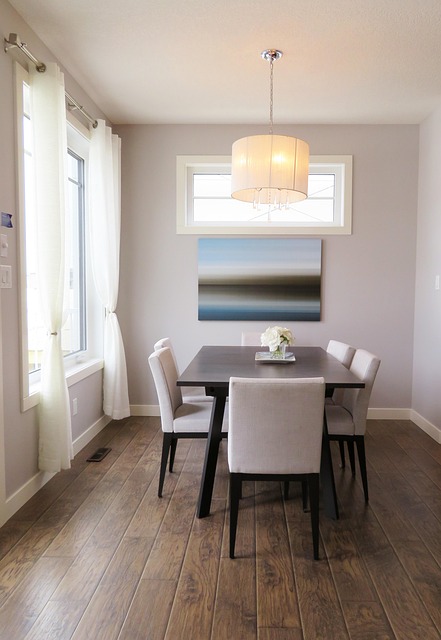How to Choose a Dining Room Set for Your Space
Selecting a dining room set involves more than picking an attractive table and matching chairs. A well-chosen dining set coordinates scale, function, and finish with the room’s layout and everyday habits, turning a dining room into both a practical meal space and a comfortable gathering spot. This article breaks down key considerations—size, material, comfort, maintenance, and room planning—to help you choose furniture that fits your lifestyle.

dining set: matching scale and style
A dining set should be proportionate to the room and consistent with your home’s aesthetic. Measure the room first: allow at least 90–120 cm (36–48 inches) from the table edge to the wall for comfortable chair movement. Consider whether you need a fixed table or an extendable one to accommodate guests. Stylewise, mixed materials (wood with metal legs, or glass with wood) can create contrast without feeling matched-for-life; choose tones and lines that complement other furniture so the set integrates with the dining room rather than competes with it.
table: shapes, sizes, and materials
Table shape affects seating and flow. Rectangular tables fit long rooms and scale well for larger groups; round tables are efficient in tighter spaces and encourage conversation; square tables work well in compact dining areas. Material choices influence durability and care: solid hardwoods offer long life and repairability, veneers can be affordable while still looking like wood, stone or glass tops resist heat or stains differently and may need coasters or mats. Consider tabletop thickness, leg placement, and whether leaves are stored within the table or separately for ease of use.
chairs: comfort, support, and arrangement
Chairs determine how long people will comfortably linger at your table. Seat height should be approximately 25–30 cm (10–12 inches) below the tabletop; standard dining chair seat heights are usually 45–48 cm (18–19 inches). Look for adequate seat depth and back support; upholstered seats add comfort but require fabric care. Mix-and-match chairs can add visual interest, but ensure consistent seat heights. Leave 60 cm (24 inches) of width per person as a guideline; for families with children, consider chairs that are easy to wipe down and store.
furniture: finishes, care, and longevity
Finishes and construction details affect how the furniture will age. Solid-wood frames and dovetail joinery are indicators of durability, while particleboard or low-density composites may show wear sooner. Protective finishes—lacquer, oil, wax, or polyurethane—determine resistance to spills and the ease of refinishing later. Consider maintenance: oiled wood may need periodic re-oiling; lacquered surfaces clean easily with a damp cloth but can scratch; glass requires frequent wiping. If you plan to move frequently, lightweight or knock-down furniture may be more practical than very heavy pieces.
dining room: layout and lighting
A dining room’s layout and lighting influence how a set performs. Center the table under a primary light source and hang pendants or chandeliers so the bottom of the fixture sits roughly 76–91 cm (30–36 inches) above the tabletop for standard ceilings. Use layered lighting—overhead plus wall sconces or side lamps—to adjust atmosphere. Position storage furniture, like buffets or cabinets, against walls where they don’t impede circulation. If your dining room opens to other living areas, choose a set that relates to nearby furniture in scale and finish for visual cohesion.
Conclusion
Choosing a dining room set is a balance of measurements, materials, comfort, and the way you use the space. Start with accurate room measurements, then prioritize the elements that matter most—durability for frequent family use, extendability for entertaining, or refined finishes for formal dining. Pay attention to chair comfort and tabletop maintenance needs, and coordinate the set with your dining room’s layout and lighting. Thoughtful selection will result in furniture that supports both everyday meals and memorable gatherings without overwhelming the room.






